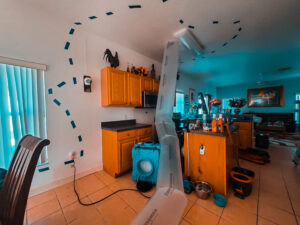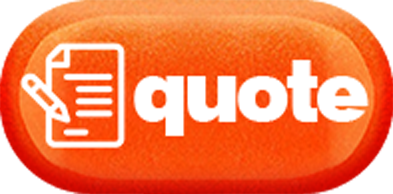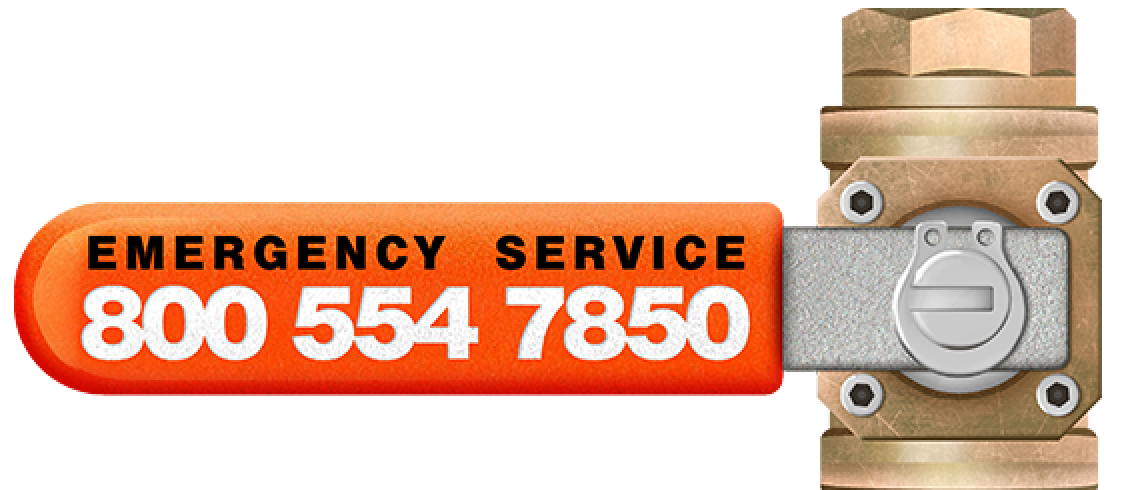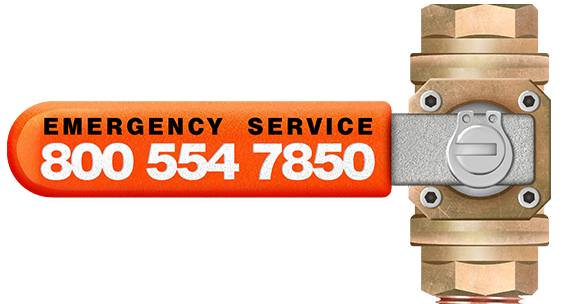Mold Spores Are Everywhere
That can’t be stopped. What mold needs to grow into a colony is moisture. With high humidity, which is a defining characteristic of Florida’s climate, mold has plenty of moisture to work with. Home mold is unfortunately common.
Moisture in the air is not visible to the naked eye, and neither are mold spores. But when the two come together in your home, within 48 hours the mold spores can begin to grow into mold colonies. If you can keep the humidity levels below 50% you are well on your way to preventing mold from growing in your home.
Mold Growing in Your Home
There are other ways mold spores will get the moisture they need. Leaks, condensation, poor ventilation, and outright Flooding are all problems too. The sources of water that are common to produce unsightly mold include:
- Leaking roof
- Humidity in the home of 60% and higher
- Floodwaters entering the home
- Leaking plumbing
- Leaking devices
- Cracked and missing caulking in tubs, showers, sinks, and backsplashes
- Poorly ventilated bathrooms and laundry rooms
Of course, there are so many other ways water can intrude into your home as well. Rain or water from a sprinkler system could come through an open window. Someone might spill water or other liquid and fail to clean it up. And there are so many other ways. The key is immediate cleanup. If it is a lot of water requiring cleanup, Construemax can help you with that.
Black Mold and Toxic Mold

Most people discover they have mold in their house when they see it. What is most often referred to as Black Mold is most commonly a variety of mold called Stachybotrys. This is sometimes called Toxic Mold. Those phrases, ‘black mold’ and ‘toxic mold’, are descriptors of mold, but they don’t have any technical meaning. Nevertheless, as the Centers for Disease Control (CDC) says: “It is not necessary to determine what type of mold you may have growing in your home or other building. All molds should be treated the same with respect to potential health risks and removal.”
Mold can come in any color and, those that produce toxins, can be black – but many other colors as well. The toxicity of mold comes from what is called a mycotoxin. These mycotoxins can be found in foods and are dangerous when ingested, but they can also be airborne and inhaled, which is the risk when you see these molds on your walls and other areas of your home.
Some varieties of mold will be more dangerous than others, but it is never good to have it growing in your house. Aside from the effects mold has on humans and pets, the mold will feed on the surface where it grows, weakening and destroying wood, drywall, carpet, and whatever food source it can grow on.
Visible Signs of Invisible Mold
There may be signs that you could have a mold problem even when you can’t see it. The first listed is not visible, but the rest are. Those include:
- Musty smells
- Long-standing condensation or leaks
- Damp areas like under sinks or appliances
- Cracked or missing caulking around showers, tubs, sinks, and backsplashes
Health Effects – Signs of Invisible Mold in Your Home or Business
- Respiratory distress
- Fatigue
- Persistent headaches
- Dry, unexplained coughing
- Cold symptoms
The health-related symptoms are particularly noteworthy if symptoms lessen or go away when not in the home. If you don’t feel well in the morning but go to work anyway, then feel normal by the end of the day, pay attention to how you feel after getting home. If you start feeling bad again, you should check to see if you have mold in your home.
Just as one person could be allergic to peanuts and their spouse or family member isn’t, one person could have high sensitivity to the mold present in the home, and another person in the home has a high tolerance. As such, someone feeling well doesn’t mean there is no problem.
What Can Be Done About Mold?
If you DO have mold in your home, there is something that can be done. You can call Construemax and we can perform mold remediation. We will inspect your home for signs of mold and indications of excess water or moisture where it doesn’t belong.
Can I Get Rid of Mold in My House Myself?
We do not recommend ‘Do-it-yourself mold remediation’. When we do mold remediation we employ industry standards for personal protection, air scrubbers, containment, debris removal, and cleaning. We also engage an Industrial Hygienist to evaluate the infestation and we follow the protocols they provide for bringing air quality back to safe levels. (Remember, mold spores are everywhere and they can’t be stopped, but there are standards that identify safe levels.)
Industrial Hygienist
Industrial Hygienists are scientists whose specialty is health and safety. While they are qualified to evaluate and provide protocols for many different hazards, in this context, they will evaluate your home for mold growth and air quality. These protocols specify to our technicians what specific tasks need to be carried out to best eliminate the threat of mold in the home. These include where to place the containment. Where and how many air scrubbers need to be deployed, which surfaces need to be physically removed from the premises, and what remaining surfaces need to be cleaned.
Containment
One of the first things that they will do is set up temporary plastic barriers to minimize the flow of air to other areas of the house. This is to prevent these unseen mold spores from traveling. It will also make it easier for the air scrubbers to do their job of removing the spores from the air.
Air Scrubber

An air scrubber is a device that pulls contaminants from the air. They will trap the mold spores and prevent them from doing any additional damage or adding additional mold colonies to your home. We use industrial air scrubbers intended for this purpose.
After each deployment, they are meticulously cleaned and prepared for the next time they are needed. This cleaning is time-consuming but necessary to prevent introducing new toxins into your home at the very time we’re trying to remove them.
Debris Removal– Mold Contaminated Material Removal
Just as the air needs to be cleaned of mold spores, those surfaces that have mold colonies must be removed. If it is a small enough area, state regulations allow the cleaning of the surface, but generally, there are building materials that have infected areas that need to be removed. The Industrial Hygienist will specify which walls, floors, ceilings, or other surfaces are contaminated. If there is insulation behind the drywall that is affected, that too will be discarded.
We’ll follow the protocol to ensure that everything that needs to be done is done. We rely on that protocol to avoid removing more than is necessary. Of course the more you tear out, the more that needs to be built back, and we avoid adding costs that are not necessary.
Cleaning – Mold Remediation
Some surfaces will not be removed, and of course, things like the studs of your home are not so easy to replace. So the protocol will specify how and which surfaces to clean. We use a disinfectant that will kill mold spores so as to prevent those colonies from repopulating.
After we have followed the protocol provided by the Industrial Hygienist, they will test your space again and make sure that the air quality as now at a safe level.
Returning to the Question: Can I Get Rid of Mold in My House Myself?
That is a decision you need to make for yourself. Construemax has the equipment, staff, and training to do the work for you in a timely and safe manner. We would be pleased to help you resolve this problem.
We hope you will never need our services, but if you do find mold in your house: Relax.Trust Construemax.







